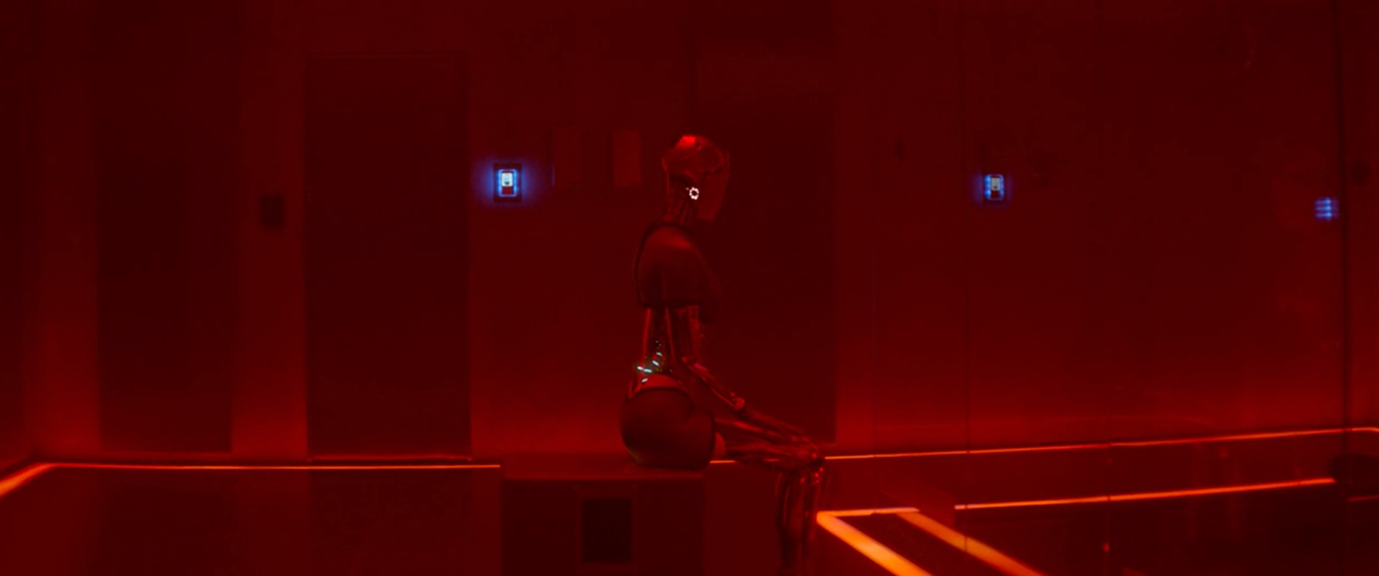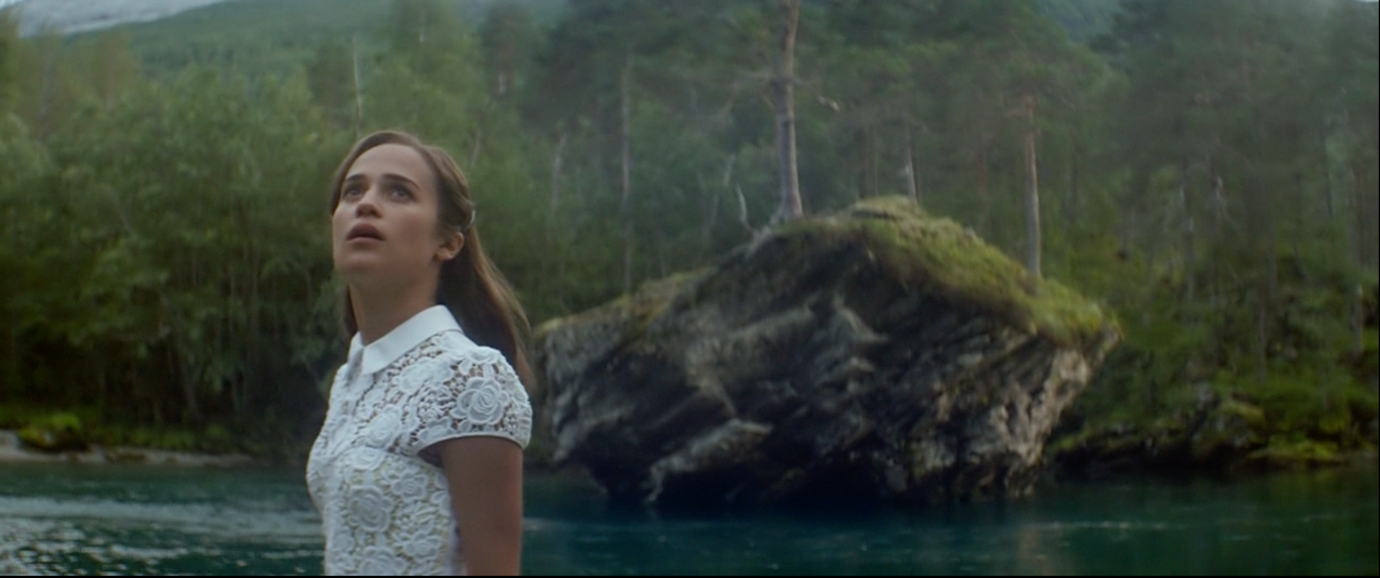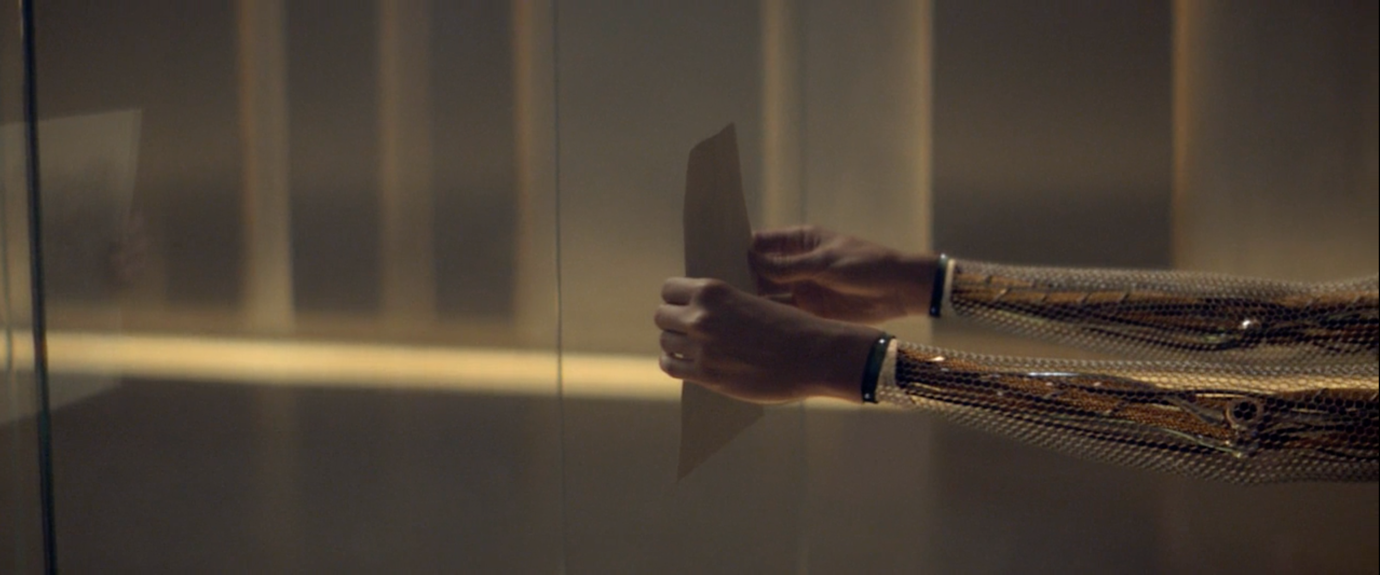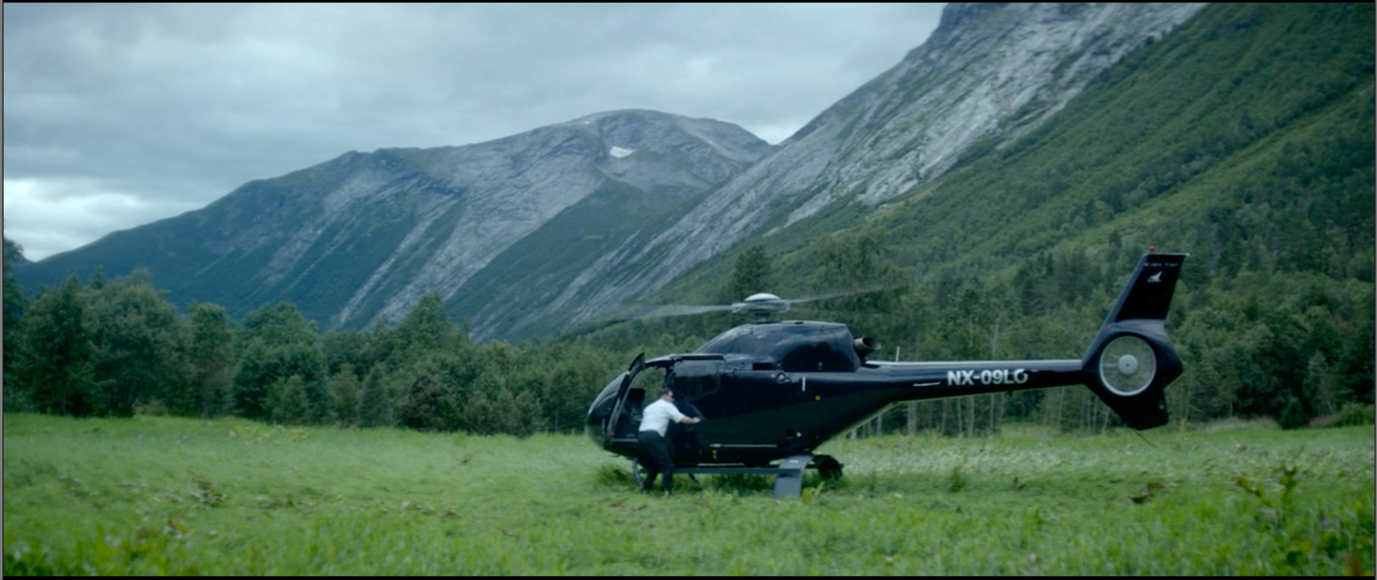Introduction
One of the central themes of modern filmmaking is the exploration of artificial intelligence as a biotechnical being superior in all capacities to humans, thus occupying the next step in evolution. Many feature films and TV shows have explored this problem, creating unique narratives and filmmakers’ opinions. One such work is the 2014 release of Ex Machina by Alex Garland. The film showed viewers such a fundamentally biblical story of creating a new life and subsequent patricide that it earned high acclaim from critics and the general audience alike. In addition, Ex Machina won an Academy Award for Best Visual Effects. The audiovisual part of the narrative and the symbolism used will be the focus of this paper.
Brief Overview
At the center of the story narrative is Caleb, a computer programmer, who arrives at his boss Nathan’s mansion as part of a work visit. As it turns out, Nathan has summoned Caleb to participate in the testing of a newly created robot, the artificial intelligence Ava. As the story progresses, it turns out that not only Caleb was the tester, but Ava as well, as the robot and programmer analyzed each other and developed a relationship; this eventually led to a love line between them. Caleb helped Ava get out from under the creator’s lab control, after which he found himself tricked by the robot and locked in a science center. Nathan, the creator, died at the hands of his robot and was left for dead in a corridor, while Ava, transformed into a regular human, walked out of the lab into the human world.
The Theme of Hell
One of the most memorable methods of creating an audiovisual narrative is the vertical hierarchy and the color red as a symbol of Hell. Science laboratories, where good for all humanity discoveries are made, are rarely made underground, but the Nathan Laboratory Center was located on the lower floors of the building. The layout of the floors, created by camera control and vertical movement, causes the viewer to subconsciously associate the laboratory with Hell, where horrific events occur. The symbolism of Hell was captured in much larger footage — often, the mise-en-scene included human skulls, customized to match the interior of the room. The presence of the skulls should have already hinted to us in advance, before the climactic scene, about the outcome and the sinister intentions taking place in this laboratory. Thus, one of the critical scenes confirming the symbolism of Hell is turning on the red lights in the entire laboratory at night in order to de-energize the robotic devices. Red light is a visual cinematic element rarely done in real laboratories, but it perfectly conveys feelings of anxiety and worry (Figure 1). These feelings are catalyzed by the addition of an alarming background tune that alerts us to danger. In addition, red is the color of Hell because red is associated with fire and fear (Angel). Thus, one of the main audiovisual effects in Ex Machina was the vertical camera movements, the red lighting, and the placement of human skulls as a symbolic signifier of the hell laboratory.

The Humanization of the Robot
Ex Machina was built on the foundation of creating a new type of human being, a robotic machine that would combine technical capabilities with the emotional intelligence of a human being. From the director’s point of view, such a creature was to become a new step in human evolution, surpassing Homo sapiens on the road to perfection. Ava was shown as the last version of such a robot, which means there were several copies before her that did not pass the Turing test (McCoy 1). Ava’s transition from robot to human was successfully shown with visuals showing her appearance. Ava was initially shown as a robot with only some parts of the human body, her face, breasts, or hips. However, as the film progresses, as the viewer becomes increasingly convinced of Ava’s humanity, the robot gradually takes on a more humanized appearance: first, hair and dress are added, then an entire human appearance (Figure 2). With this method, the gradual evolution of the robot is shown even within the film, and its subsequent placement in the human world forces the viewer to ponder the new creature’s place among us. It is impossible not to quote one of the main protagonists of the TV show “Westworld,” which related thematically to the story of robots finding themselves among humans. Thus, Maeve said, “this is the new world. And in the new world you can be whoever the **** you want” (Rudoy). As Ava goes outside, the melody “Out” by Ben Salisbury and Geoff Barrow plays in the scene, which symbolizes the hope and change associated with the anxiety about what awaits humanity next.

Using Mirrors
The most apparent visual tool of the entire film is the ubiquitous use of mirrors. Through the mirrors, the viewer sees the reflection of the characters or sees parts of their bodies. The use of mirrors should be viewed from two different angles, equally applicable to the concept of Ex Machina. On the one hand, mirrors symbolize the illusory and magical expansion of space when the viewer realizes that the world under study is more voluminous than previously thought. In this sense, it is impossible not to remember the textbook example of the Hollywood cinema Alice in Wonderland, in which Alice entered the fantasy world through mirrors (Arlandis and Reyes-Torres 128). The world inside the mirrors is an illogical, surprising, and pristine environment where the character finds herself in atypical circumstances. From this perspective, Ava should be seen as Alice, who is also in a world of people and human emotion new to her, alien to digital intelligence. Thus, one of the first functions of the ubiquitous use of mirrors is the symbolism of transition and the new world into which the atypical robot character is placed.
Meanwhile, the mirror also reflects our self, through which self-knowledge and self-identification are achieved. In fact, the mirror is the only material in the world that helps an individual to be clearly aware of himself as a human being. From this perspective, the use of mirrors reflects Ava’s capacity for self-development and self-exploration. In one scene in the film, there is a glass barrier between the characters of Caleb and Ava, through which they look at each other. At first glance, this barrier may appear to be designed to protect and physically separate the human from the unpredictable robot; simultaneously, they actively interact through the glass. However, in one of the frames (Fig. 3), it becomes clear that Ava sees herself perfectly well in the reflection of this glass and thus uses it not so much for studying Caleb but for self-discovery of her personality. In other words, the mirrors in this laboratory symbolize artificial intelligence’s natural urge for self-development through reflection.

Contrast of Sounds
Audio effects are actively used by filmmakers to complement the audiovisual image — a picture alone is not enough to convey the desired message accurately. Ex Machina uses the recognizable sounds of nature, technical devices, and chamois, but Garland relied on sound contrast to emotionally shock the viewer. One of the most prominent examples of this contradictory combination is the scene when Caleb arrives in a helicopter at Nathan’s property at the beginning of the film. The noisy, annoying, and loud sound of the helicopter blades, in which we cannot even hear the characters’ voices, is replaced instantly by the silent silence of the mountain forest where Caleb finds himself (Fig. 4). This contrast was used to sharply let the viewer into the world of Nathan, the creator of artificial intelligence. The noise of the urban environment, human interaction, and the helicopter transform in an instant into a tranquil and solitary silence, and this metamorphosis provides a deeper insight into who Nathan is. In particular, the contrast shows the viewer that Nathan is an isolated scientist playing God by creating new life.

Conclusion
To summarize, it bears repeating that filmmakers often turn to audiovisual tools for a more accurate rhetorical narration of their thoughts. The unique combination of sound and picture allows the emotional tone invested in a scene to be conveyed unmistakably to the viewer and control the viewer’s attention. In addition, such tools allow us to predict critical moments in the film long before they happen. In Ex Machina by Alex Garland, there are many techniques used to achieve these goals. In particular, through angles and audiovisual effects, the director drew a parallel between the laboratory in which new life is created and Hell. In addition, the use of mirrors was necessary to reflect a new world in which artificial intelligence seeks self-discovery. This evolution was perfectly traceable through Ava’s appearance from a robotic device to an ordinary human being. Finally, Garland used a unique sonic contrast to tell the viewer who the creator Nathan is in absentia.
Works Cited
Angel, A. “The Color Wheel of Horror — Creating Mood with Color Lighting.” FotoDioxPro, Web.
Arlandis, Sergio, and AgustĆn Reyes-Torres. “Thresholds of Change in Children’s Literature: The Symbol of the Mirror.” Journal of New Approaches in Educational Research, vol. 7, no. 2, 2018, pp. 125-130.
Ex Machina. Directed by Alex Garland, performance by Domhnall Gleeson, Alicia Vikander, Oscar Isaac. Film4, 2014.
McCoy, John P., and Tomer D. Ullman. “A Minimal Turing Test.” Journal of Experimental Social Psychology, vol. 79, 2018, pp. 1-8.
Rudoy, Matthew. “15 of the best quotes from Westworld.” ScreenRant, Web.